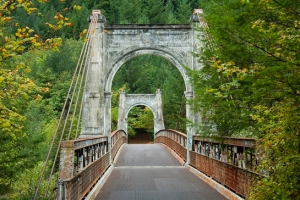Red-list bridges issue in new transportation plan

New Hampshire officials have released a draft of their 10-year plan for improving the state’s transportation infrastructure between 2019 and 2028.
Based on the current level of funding included in the draft, the number of “red list” bridges in the state will continue to climb by as much as 14%. A “red list” bridge is one that is designated “structurally deficient,” and receives a rating of “poor” or below on the national bridge index. This list currently contains 140 state-owned bridges and 254 municipal bridges in the Granite State. Every year an average of 22 more bridges are added to the red list.
In September and October, 19 public hearings will be held throughout the state to discuss the current draft of the 10-year plan.
Here are the numbers:
- Current red-list NH bridges: 394 (140 state-owned, 254 municipal)
- Current 10-year plan: Address 223 bridges, leave 159 bridges unaddressed
- Current 10-year plan funding: $84 million for paving and bridge work, $6.8 million block grant for municipal bridge projects
- Suggested change to 10-year plan: Additional $6 million per year for non red-list bridge preservation/maintenance, $24 million per year for red-list bridge repair
More funding?
Proponents of increasing state transportation infrastructure spending, including NH DOT’s director of project development, Peter Stamnas, believe the state should work proactively to keep more bridges from being added to the “red list.”
Stamnas has called for allocating another $6 million a year for preservation work to help keep bridges from falling onto the rest list, and another $24 million per year to address more red-list bridges. The $24 million would enable the state to repair an estimated eight more red-list bridges each year.
There are a variety of reasons one might oppose increasing the state’s transportation infrastructure spending. For one, President Trump has advocated for a large federal infrastructure bill in the coming years— it is possible that federal money might be used to make up the shortfall in state funding. Other opponents argue that smaller budgets incentivize greater efficiency and cost-awareness on infrastructure projects.
What do you think? Should the state invest more money to repair red-list bridges? Or is current funding sufficient? Leave a comment below.











Comments
Login or register to post comments